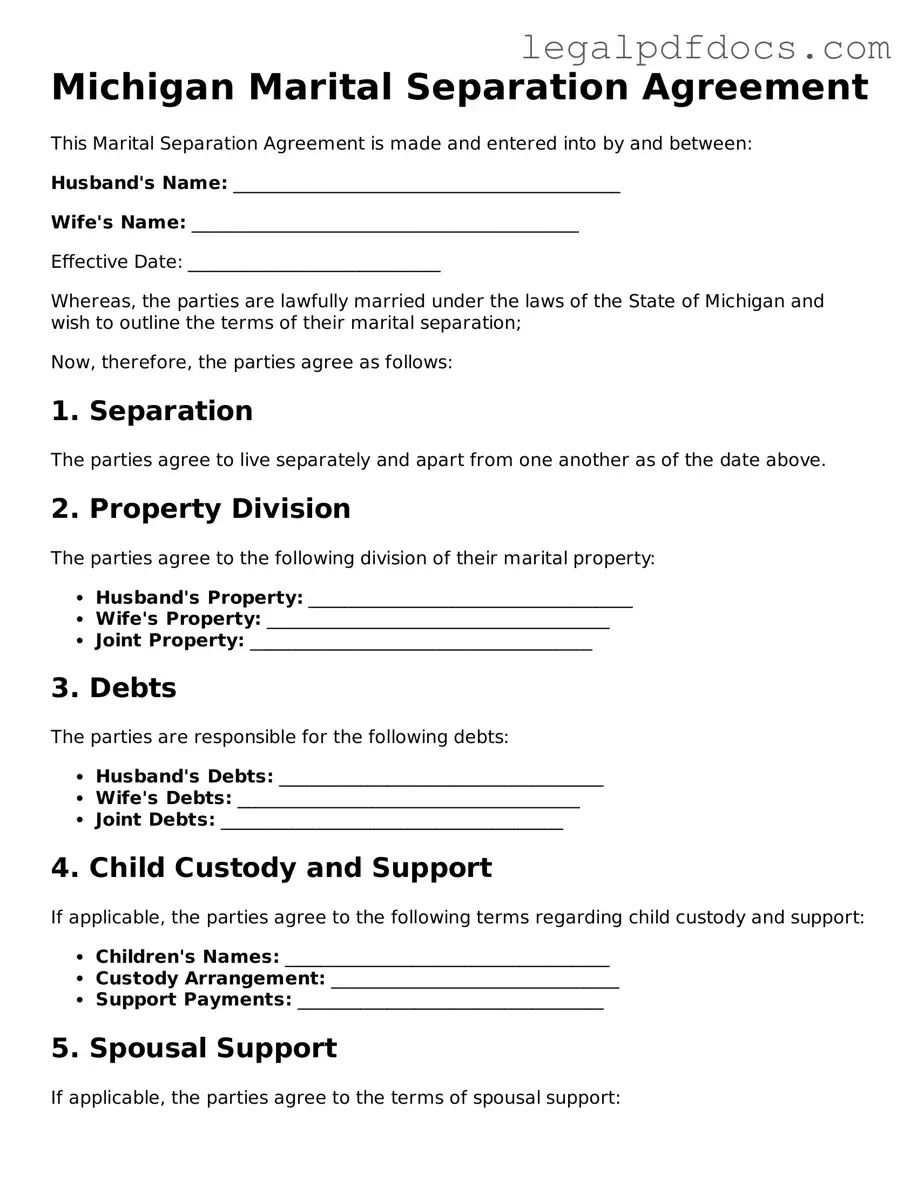Official Marital Separation Agreement Form for Michigan
A Michigan Marital Separation Agreement form is a legal document that outlines the terms of separation between spouses who wish to live apart while remaining legally married. This agreement can address various issues, including property division, child custody, and financial responsibilities. Understanding this form is crucial for individuals navigating the complexities of marital separation.
Take the first step toward a clearer future by filling out the Michigan Marital Separation Agreement form. Click the button below to get started!
Open Marital Separation Agreement Editor Here
